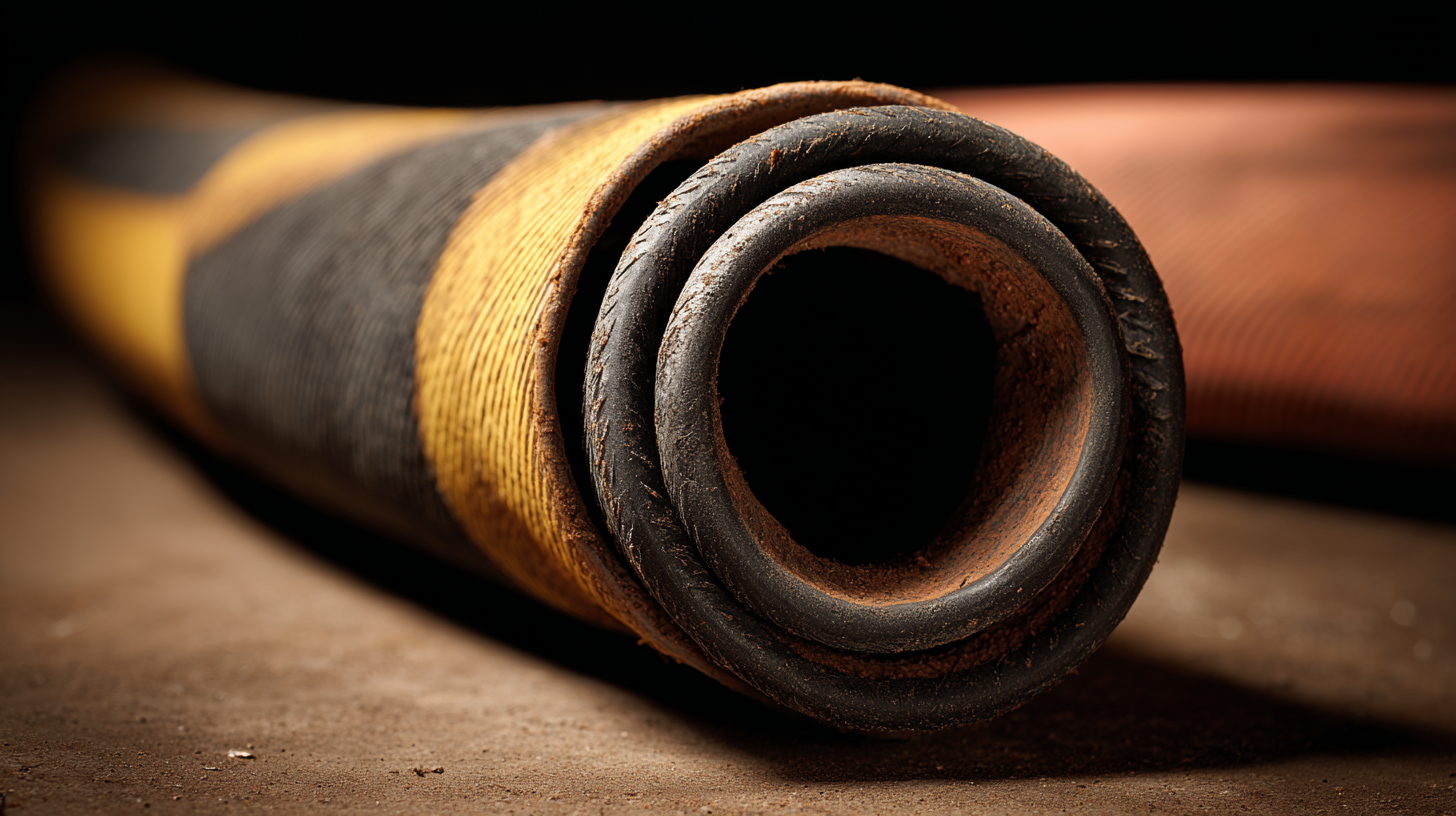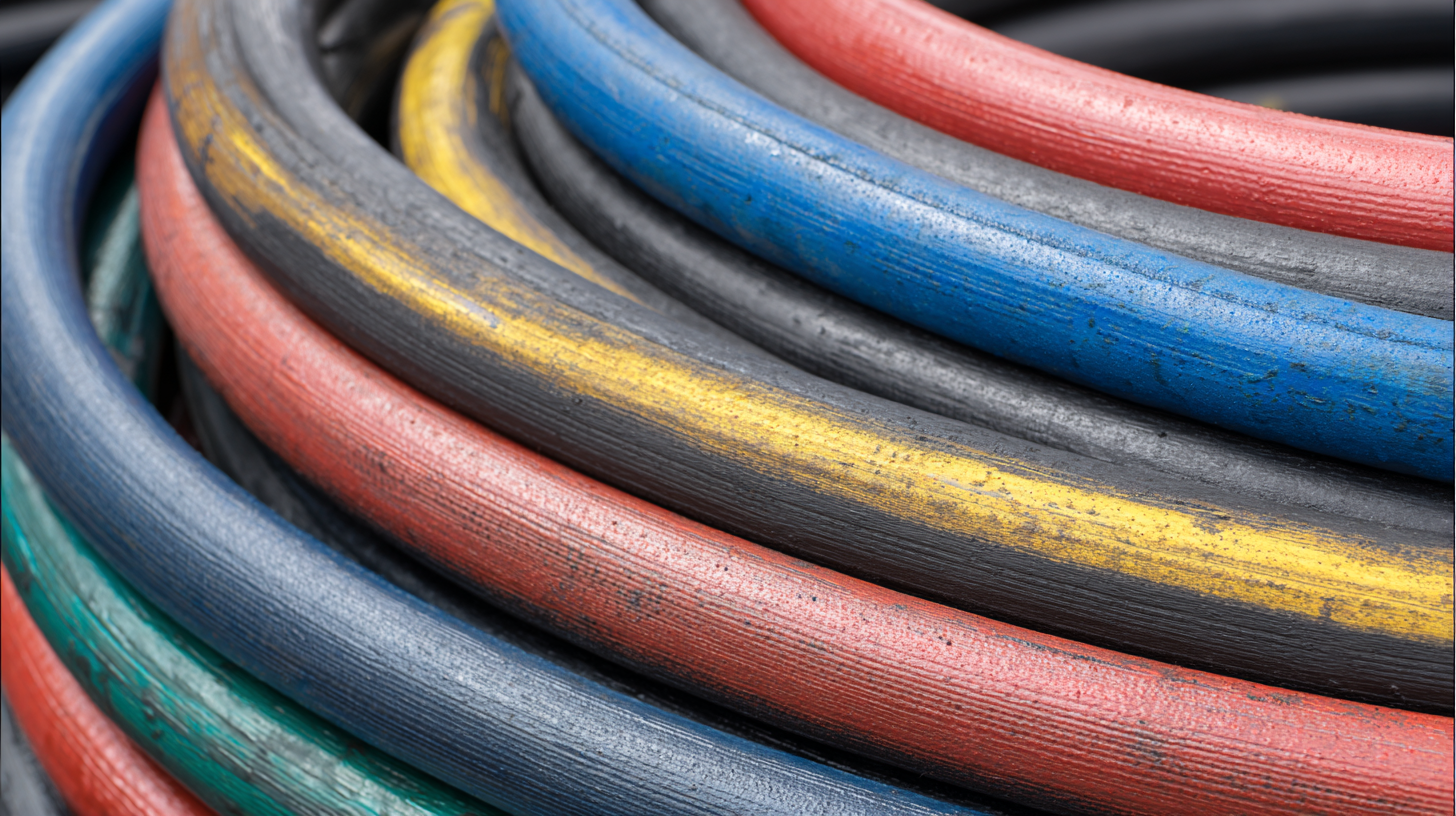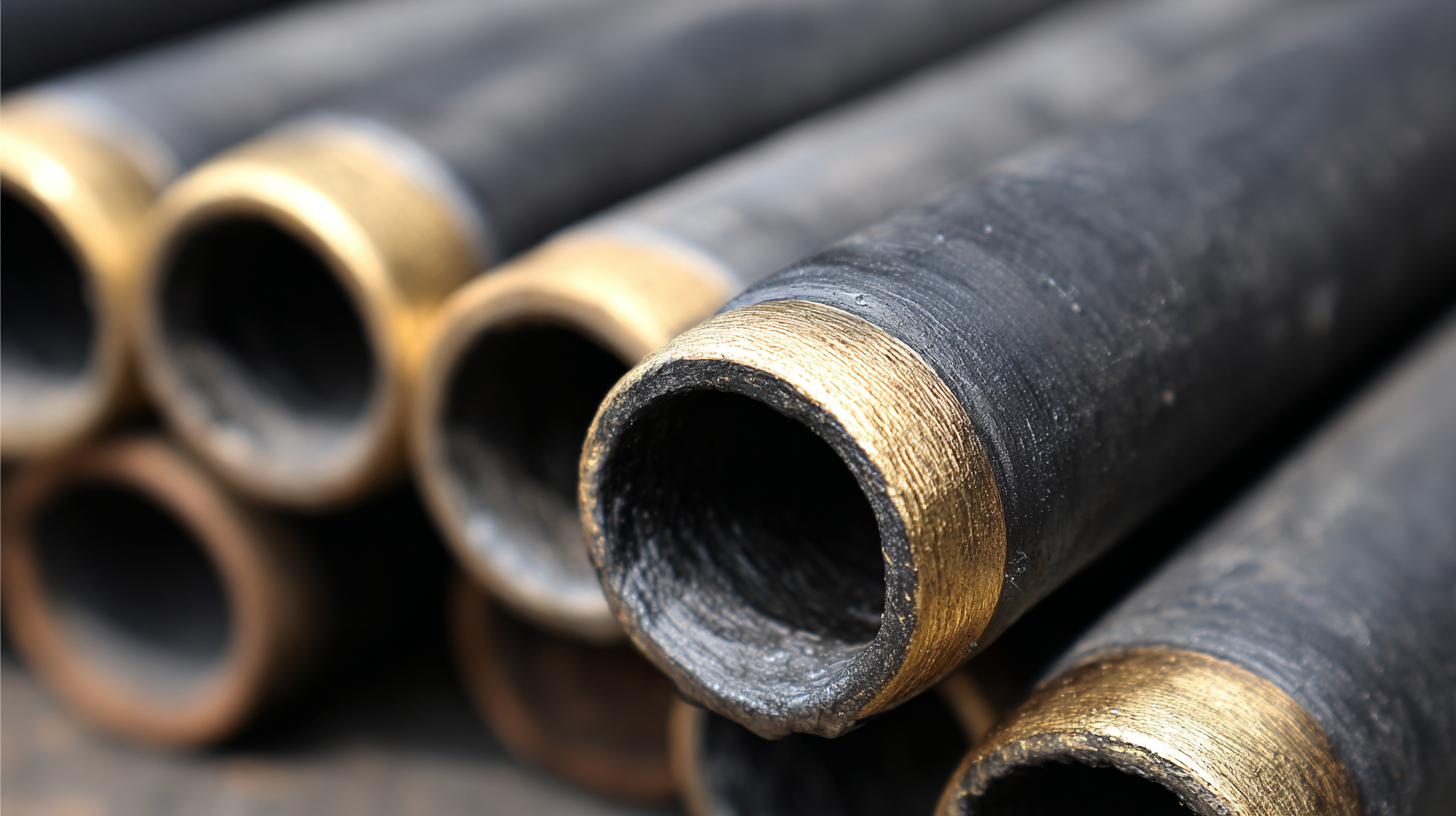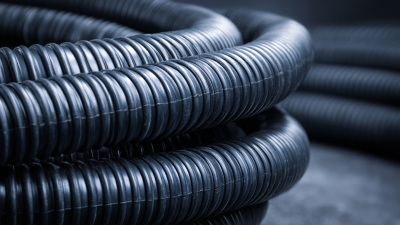When it comes to selecting the appropriate Oil Rubber Hose, making an informed decision is essential for both safety and operational efficiency. According to a recent industry report by MarketsandMarkets, the global oil and gas hose market is projected to reach $1.1 billion by 2025, with demand driven by the ongoing expansion of oil exploration and production activities. The right hose not only ensures the seamless transport of fluids but also minimizes the risk of leaks and accidents, which can have devastating environmental and financial impacts.

With a variety of options available in terms of materials, sizes, and specifications, choosing the right Oil Rubber Hose can indeed be a daunting task. This blog will provide you with seven essential tips to help simplify this decision-making process, ensuring that you select a hose tailored to your specific needs while adhering to industry standards and safety regulations.
When selecting the right oil rubber hose, understanding the various types available on the market is crucial. Oil rubber hoses can be categorized based on their application, materials, and construction types. This diversity allows industries, including automotive and manufacturing, to choose hoses that best fit their operational needs. For instance, hoses made from synthetic rubber tend to offer superior chemical resistance and durability compared to natural rubber options. Knowing the specific requirements for your application can significantly enhance performance and longevity.
One essential tip is to consider the temperature and pressure ratings of the hoses. Ensure that the hose you choose can withstand the operational pressures and temperatures in your environment. Additionally, examining the compatibility of the hose material with the type of oil being handled is vital. Inferior material choices can lead to premature wear or failure, causing safety hazards and downtime.
Furthermore, always look for hoses that meet industry standards and certifications. These approvals can guarantee that the product has undergone rigorous testing and meets safety and quality expectations. Investing time in understanding these factors will lead to informed decisions, ensuring that the oil rubber hose selected aligns perfectly with your specific needs.
When selecting the right oil rubber hose for your needs, several key factors must be considered to ensure optimal performance and safety. According to a report by the Rubber Manufacturers Association, improper hose selection can lead to costly downtime and hazardous leaks, which account for approximately 25% of maintenance costs in industrial settings. Therefore, understanding the characteristics of oil rubber hoses is crucial for any application.
Tip 1: Material Compatibility - Ensure that the hose material is compatible with the specific type of oil being used. For example, nitrile rubber hoses are ideal for petroleum-based oils, while neoprene hoses may offer better resistance to weathering and ozone exposure. The choice of material can greatly affect the longevity and safety of the hose.
Tip 2: Temperature and Pressure Ratings - Pay attention to the hose's temperature and pressure ratings. Research by the Hose Manufacturers Association indicates that operating a hose beyond its specified limits can reduce its life expectancy by up to 70%. Make sure to select a hose that can withstand both the operational pressures and temperatures of your specific application.
Tip 3: Diameter and Length - The diameter and length of the hose are essential factors. A hose that is too long or has an inadequate diameter can result in excessive pressure drops, impacting the efficiency of fluid transfer. It’s advisable to calculate the required diameter based on flow rate to optimize performance while adhering to industry standards.

When choosing the right oil rubber hose, it's crucial to evaluate both durability and flexibility, as these factors directly impact performance and longevity. A durable oil rubber hose can withstand high pressures and resistance to wear, while flexibility ensures ease of handling and installation in various applications. According to market estimates, the oil and gas hose assemblies market is projected to reach a size of USD 1.53 billion by 2025, increasing to USD 2.25 billion by 2035. This significant growth highlights the importance of selecting hoses that can endure demanding conditions in the oil and gas sectors.
To assess a hose's durability, consider factors such as material composition and reinforcement layers. High-quality materials such as synthetic rubber resist degradation from extreme temperatures and corrosive substances commonly found in oil transport. On the other hand, evaluating flexibility involves examining the hose's bend radius and its ability to maintain performance under various conditions. The hoses market as a whole is projected to grow to USD 28.25 billion by 2024, indicating a rising demand for reliable and adaptable solutions across industries. Thus, understanding these characteristics will help ensure the selection of the right oil rubber hose for your specific needs.

When selecting the right oil rubber hose, understanding temperature and pressure ratings is crucial. These ratings ensure that the hose can withstand the specific operating conditions it will encounter. For instance, the Europe Rubber Hose Market Research Report highlights the importance of segmenting hoses by their media type, including oil, as it directly correlates with performance under pressure. If a hose is rated for high pressures but not for extreme temperatures, it may fail, leading to costly downtime.
Recent developments in hydraulic hoses illustrate the necessity of these ratings further. Hoses designed to operate in extreme conditions need to withstand varying temperatures to maintain productivity. With temperature ratings often exceeding 140 degrees Fahrenheit, it becomes essential to choose hoses that remain flexible and durable under such conditions. Additionally, monitoring systems can prevent failures by tracking the hose’s working conditions and estimating its lifespan. This kind of information is vital for maintaining operational efficiency and minimizing interruptions, underscoring the importance of thorough hose selection based on comprehensive performance ratings.
| Tip Number | Tip Description | Temperature Rating (°C) | Pressure Rating (Bar) | Recommended Application |
|---|---|---|---|---|
| 1 | Understand the application requirements | -40 to 100 | 10 | Petroleum transportation |
| 2 | Check for compatibility with oils | -20 to 120 | 15 | Lubrication systems |
| 3 | Evaluate temperature fluctuations | -30 to 80 | 12 | Heavy machinery |
| 4 | Consider pressure ratings carefully | -50 to 90 | 25 | Industrial piping systems |
| 5 | Look for certification and standards compliance | -10 to 70 | 20 | Fuel transfer |
| 6 | Inspect the hose construction material | -40 to 110 | 18 | Hydraulic applications |
| 7 | Plan for installation and maintenance | -25 to 85 | 30 | Transporting fluids |
When it comes to maintaining your oil rubber hose, regular inspection and proper care are crucial for extending its lifespan. One of the first steps is to routinely check for wear and tear, including cracks, bulges, or any signs of deterioration. Any visible damage can compromise the hose’s integrity, leading to leaks or failures that can affect not only performance but also safety. Keeping the hose clean and free from contaminants is equally important, as dirt and oil build-up can cause significant wear over time. A gentle wash with soap and water, followed by thorough drying, is often sufficient to keep your hose in optimal condition.
Proper storage also plays a vital role in maintaining your oil rubber hose. It’s best to store the hose in a cool, dry place away from direct sunlight and extreme temperatures, which can degrade rubber materials. Avoid kinking or twisting the hose during storage, as this can create weak points and restrict flow. Additionally, consider using hose reels or hangers to prevent unnecessary bends and keep the hose neatly organized. By following these maintenance tips, you can significantly prolong the life of your oil rubber hose and ensure it performs effectively for your applications.






